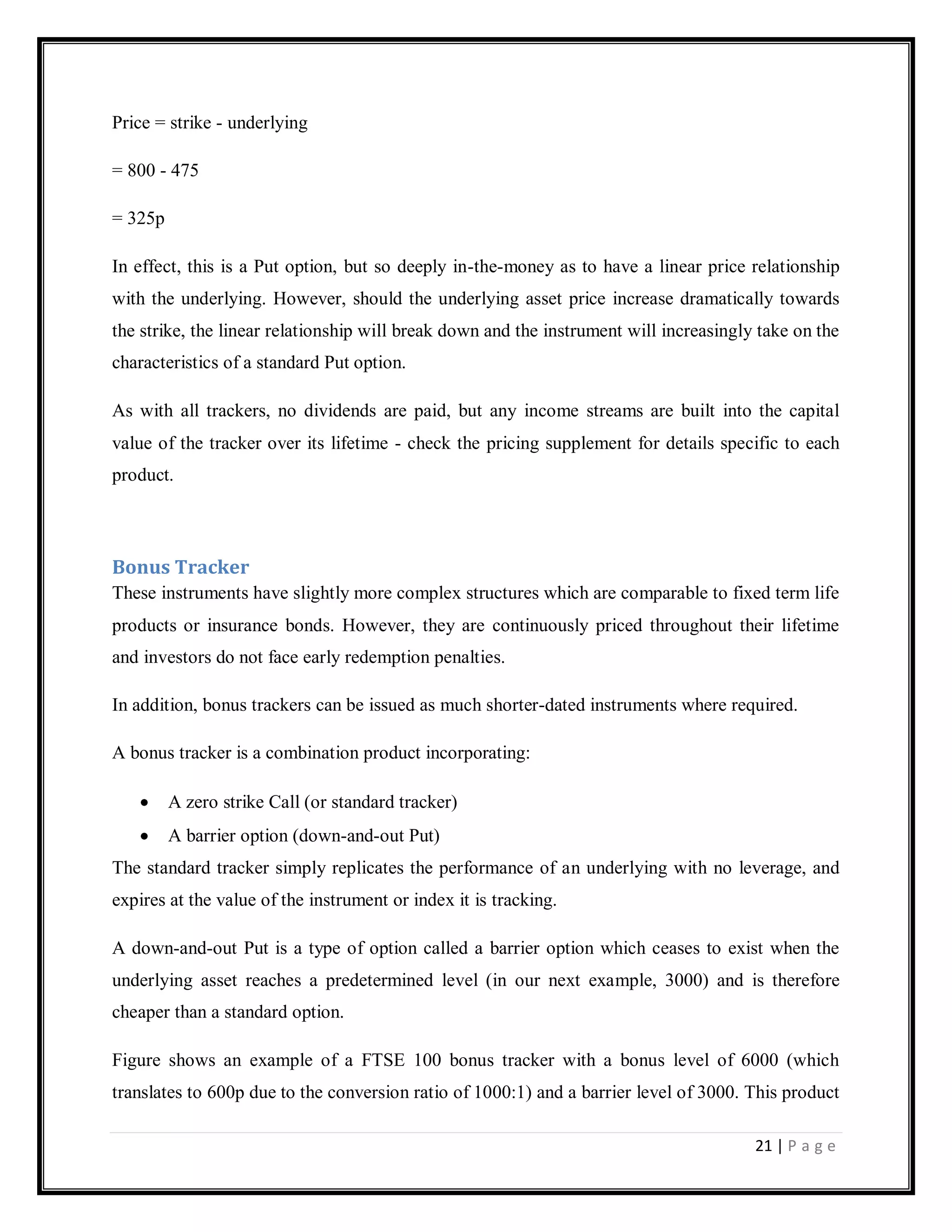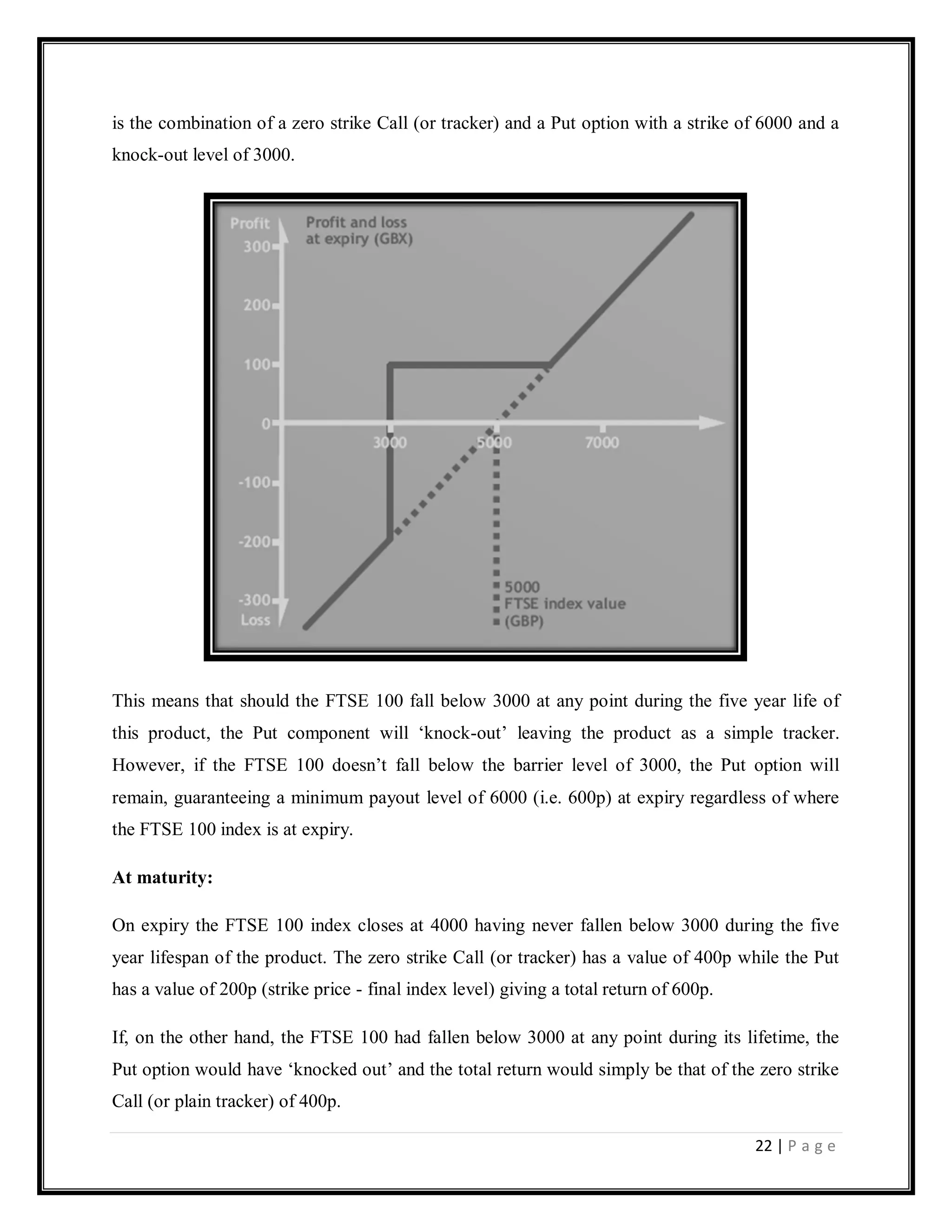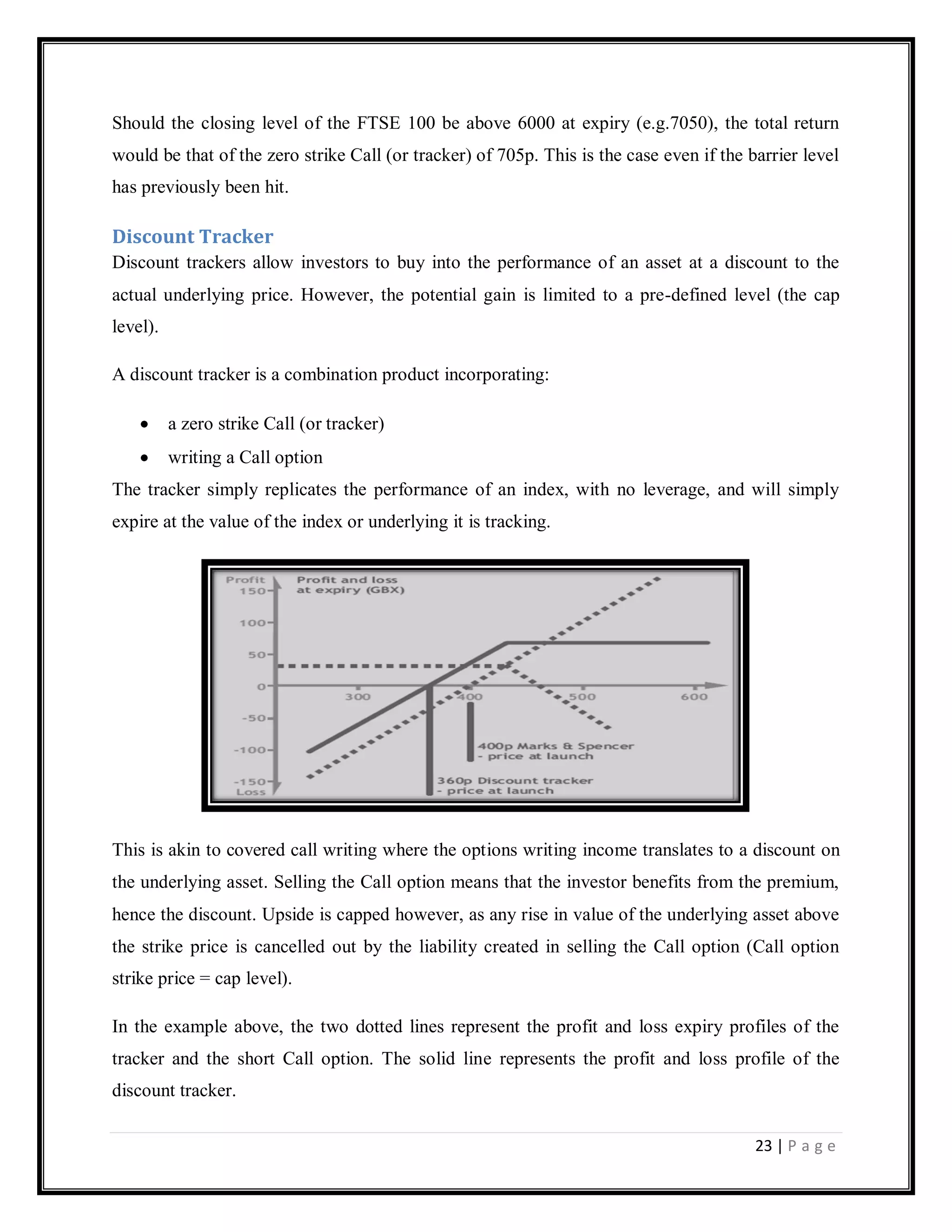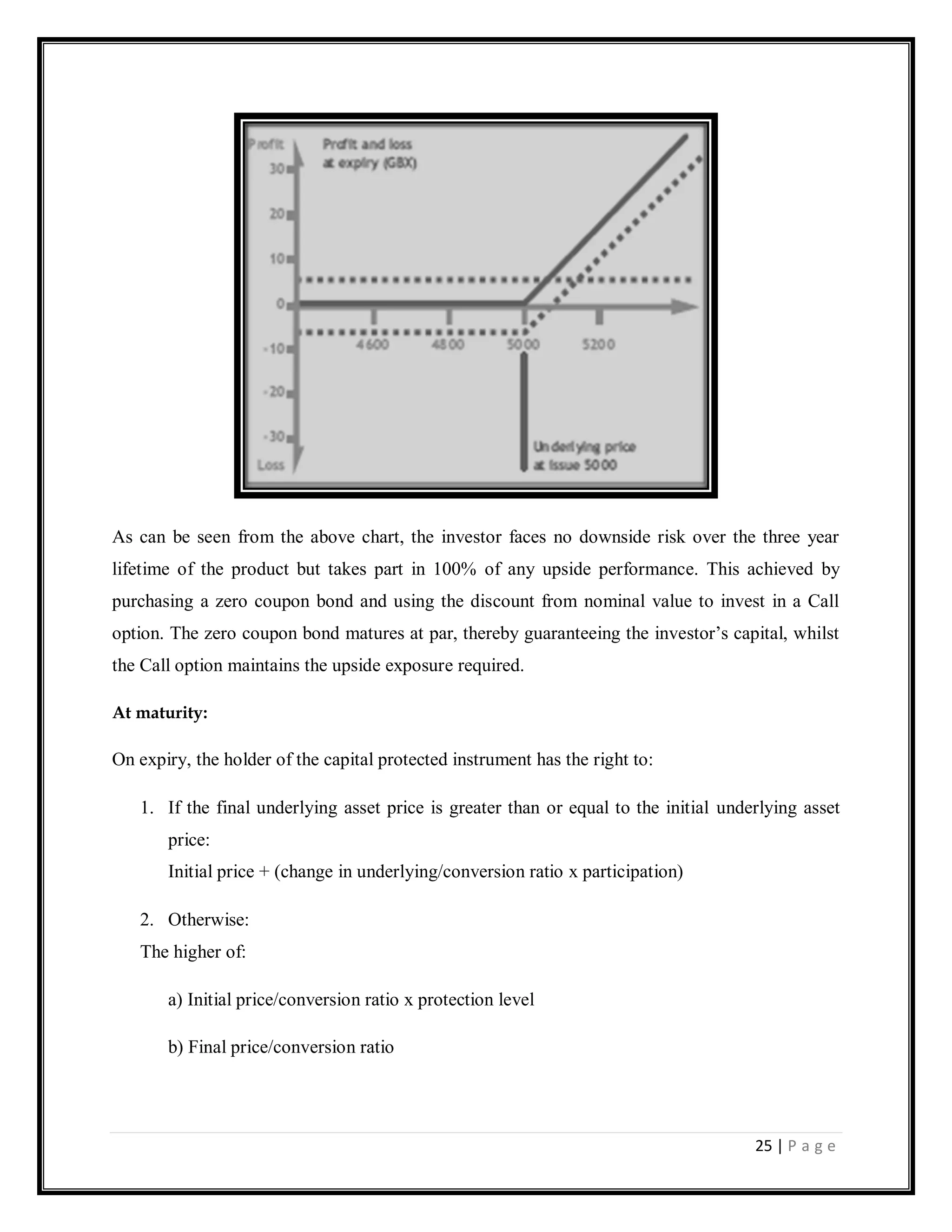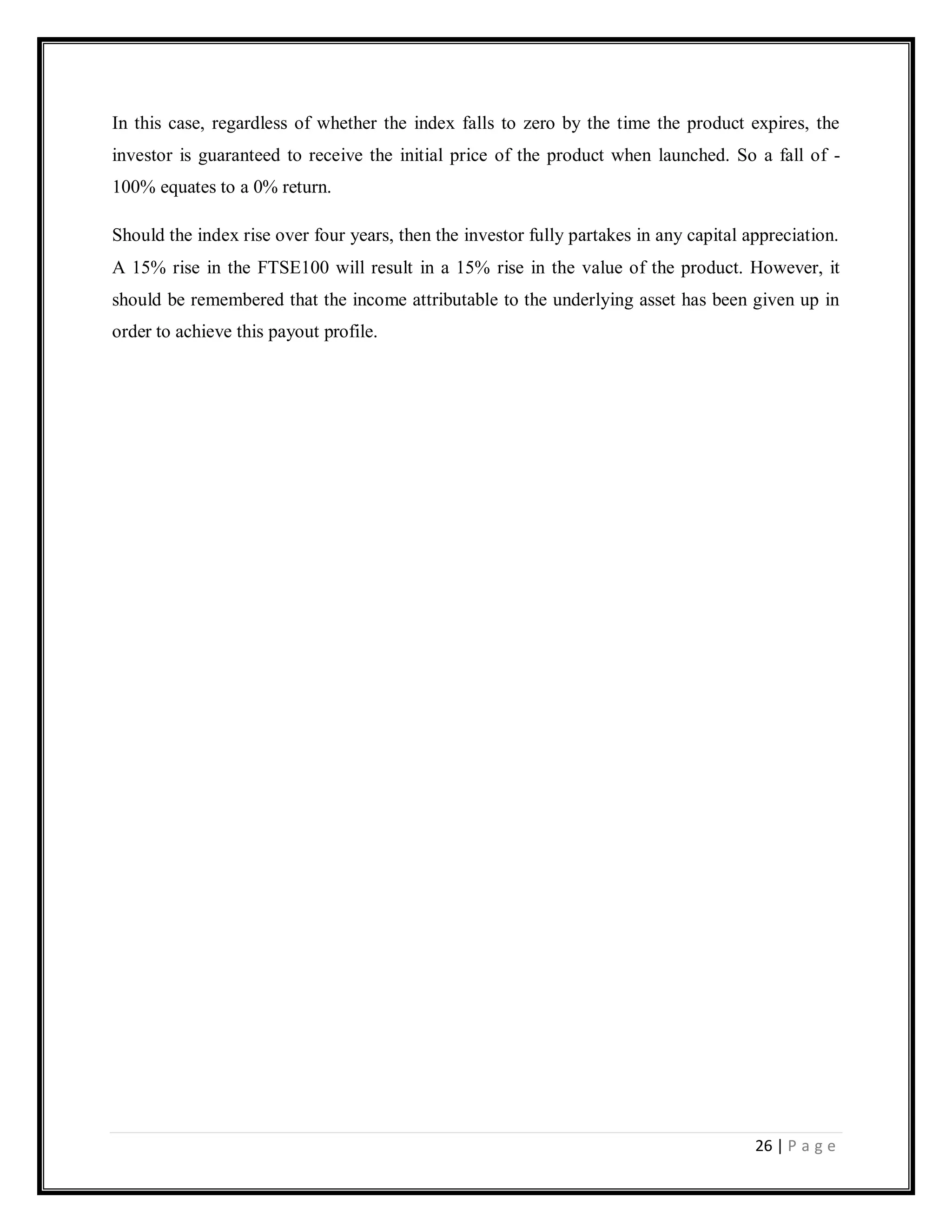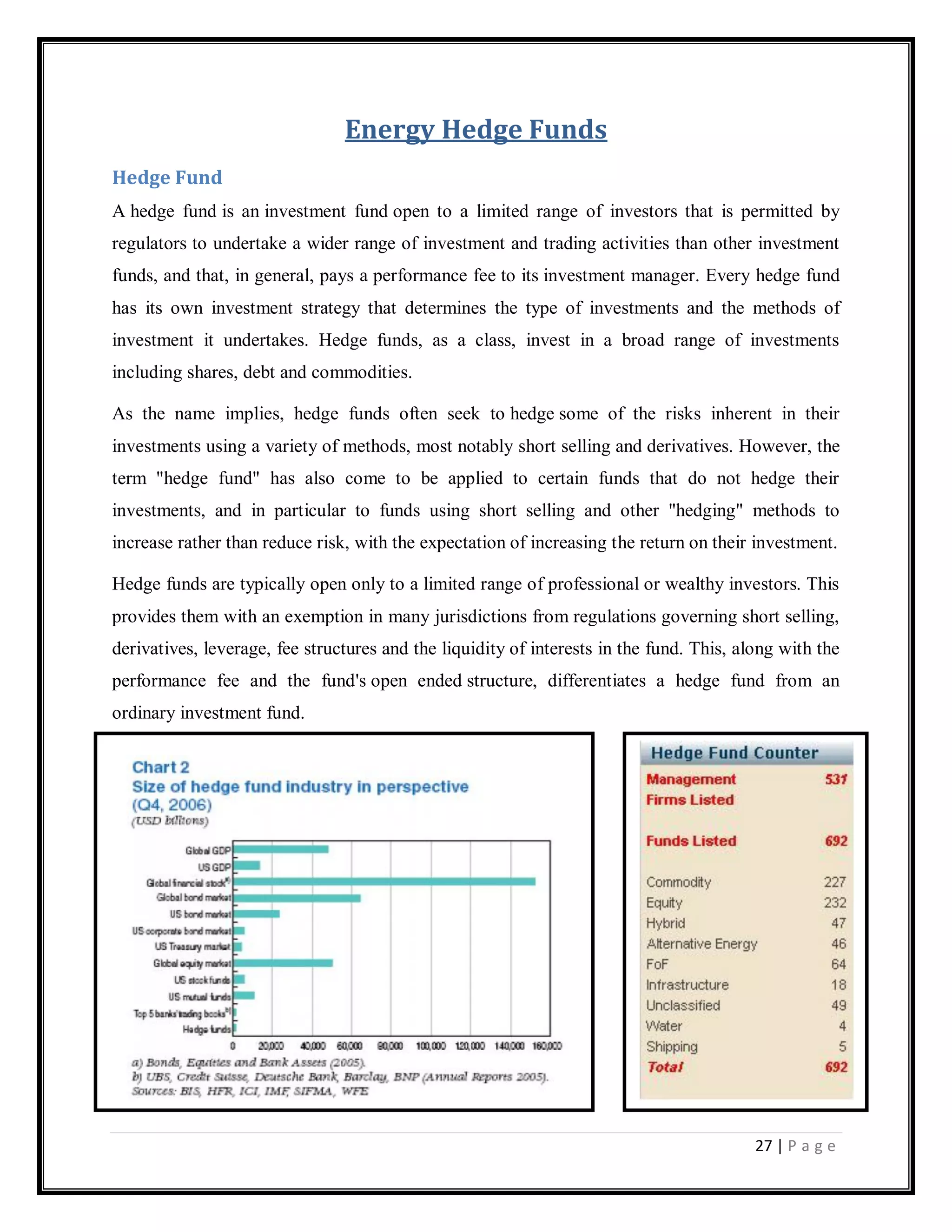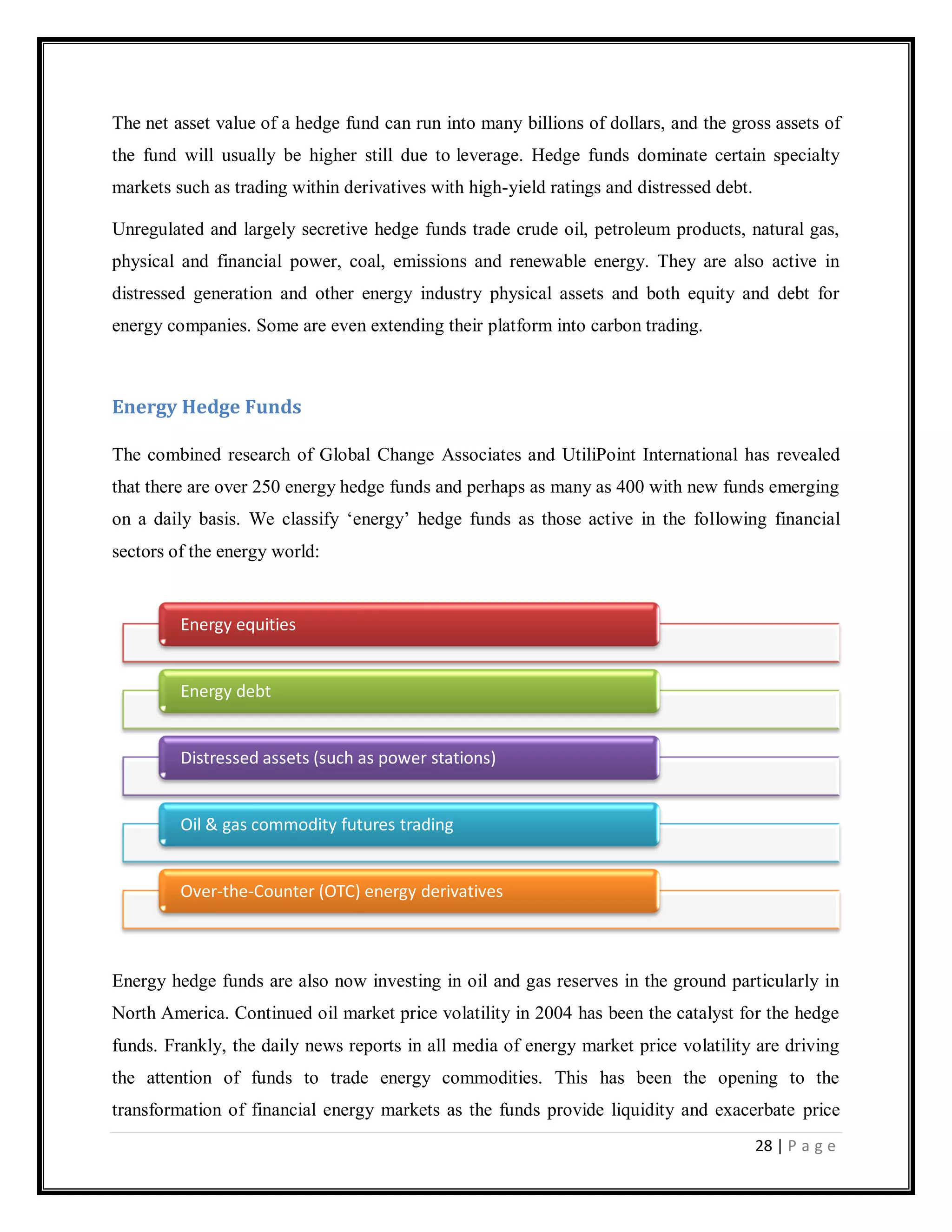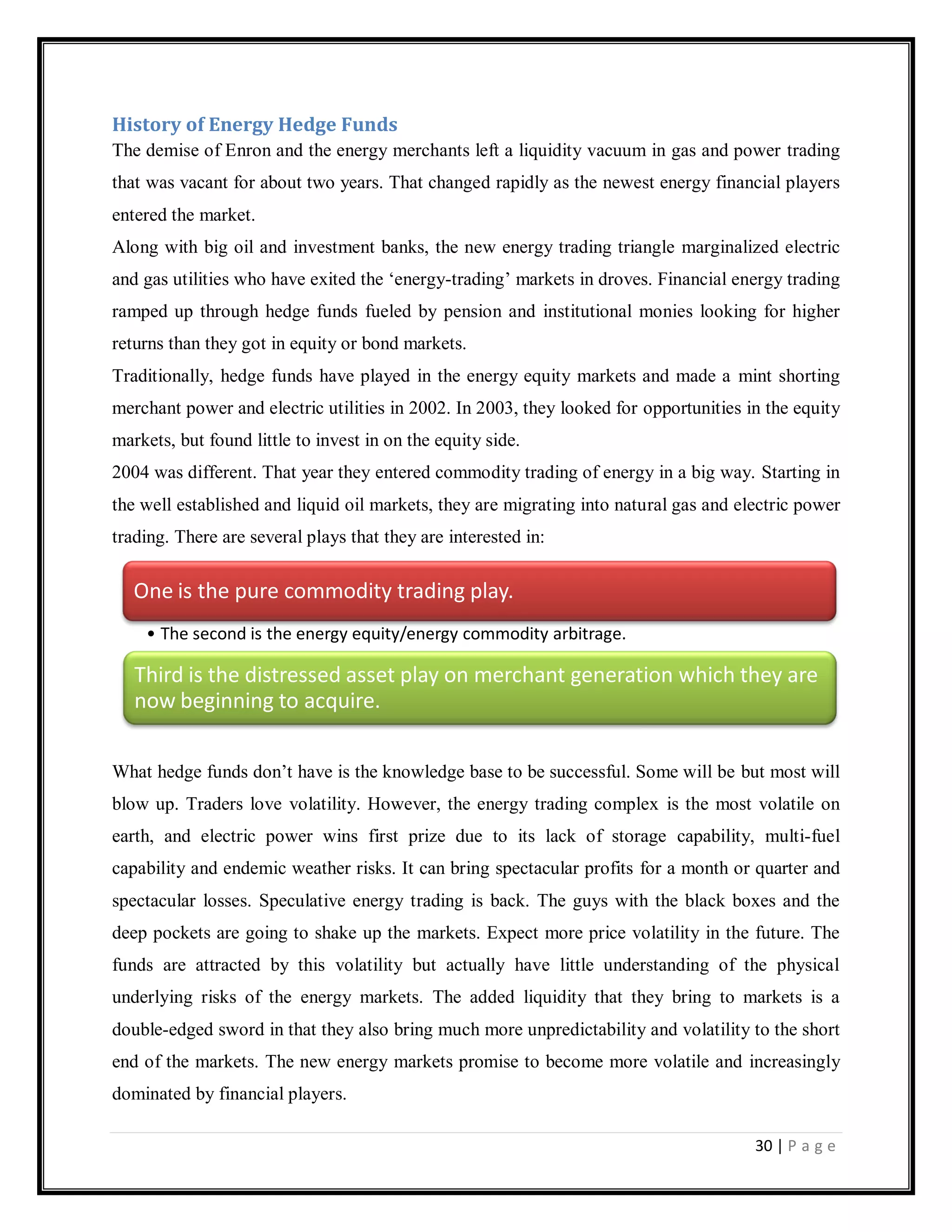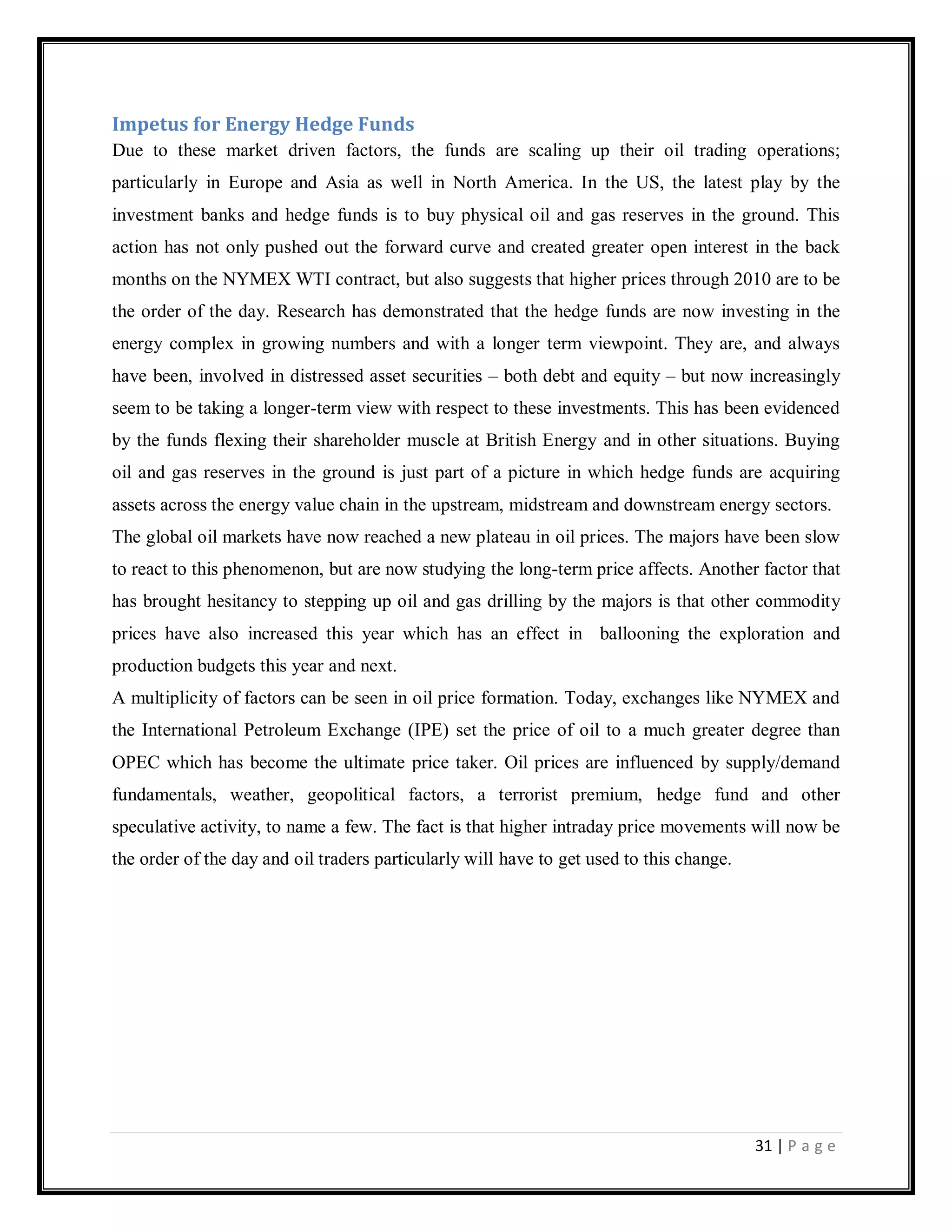This document provides an overview of exchange traded funds (ETFs), exchange traded commodities (ETCs), stapled securities, structured products, and energy hedge funds. It discusses the history and types of each, how they work, their advantages, and examples. The key information covered includes:
- ETFs track market indexes and trade like stocks on exchanges with low costs. ETCs are similar but track commodities.
- Stapled securities combine two entities that must be bought/sold together. Structured products link returns to market indexes with features like capital protection.
- Energy hedge funds invest in energy companies and commodities. Their growth was spurred by opportunities from energy industry changes.
![[AN OVERVIEW OF] September 6, 2009
SCHOOL OF PETROLEUM MANAGEMENT
2009
An Overview of
Exchange Traded Funds | Exchange Traded Commodities
STAPLE Securities | Structured Products (LSE)
Energy Hedge Funds
Joydeep Mukherjee (20081020) | Mrugesh Brahmbhatt (20081031)
Rejo Mathew (20081042) | Suresh Vaghasiya (20082001)
G A N D H I N A G A R](https://image.slidesharecdn.com/derivativesetfetcstaplespehf-12910995198636-phpapp02/75/Derivatives-ETF-ETC-STAPLE-SP-EHF-1-2048.jpg)
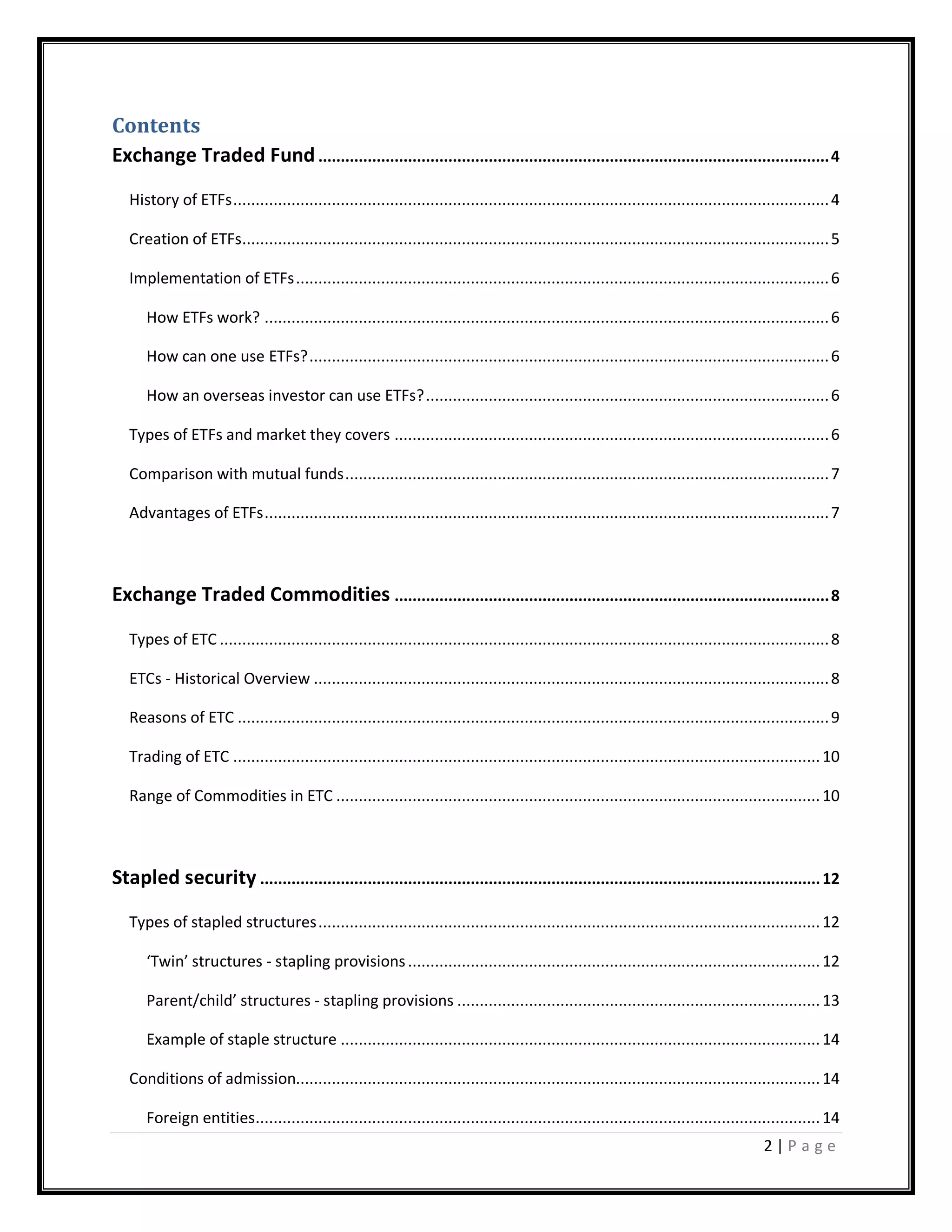

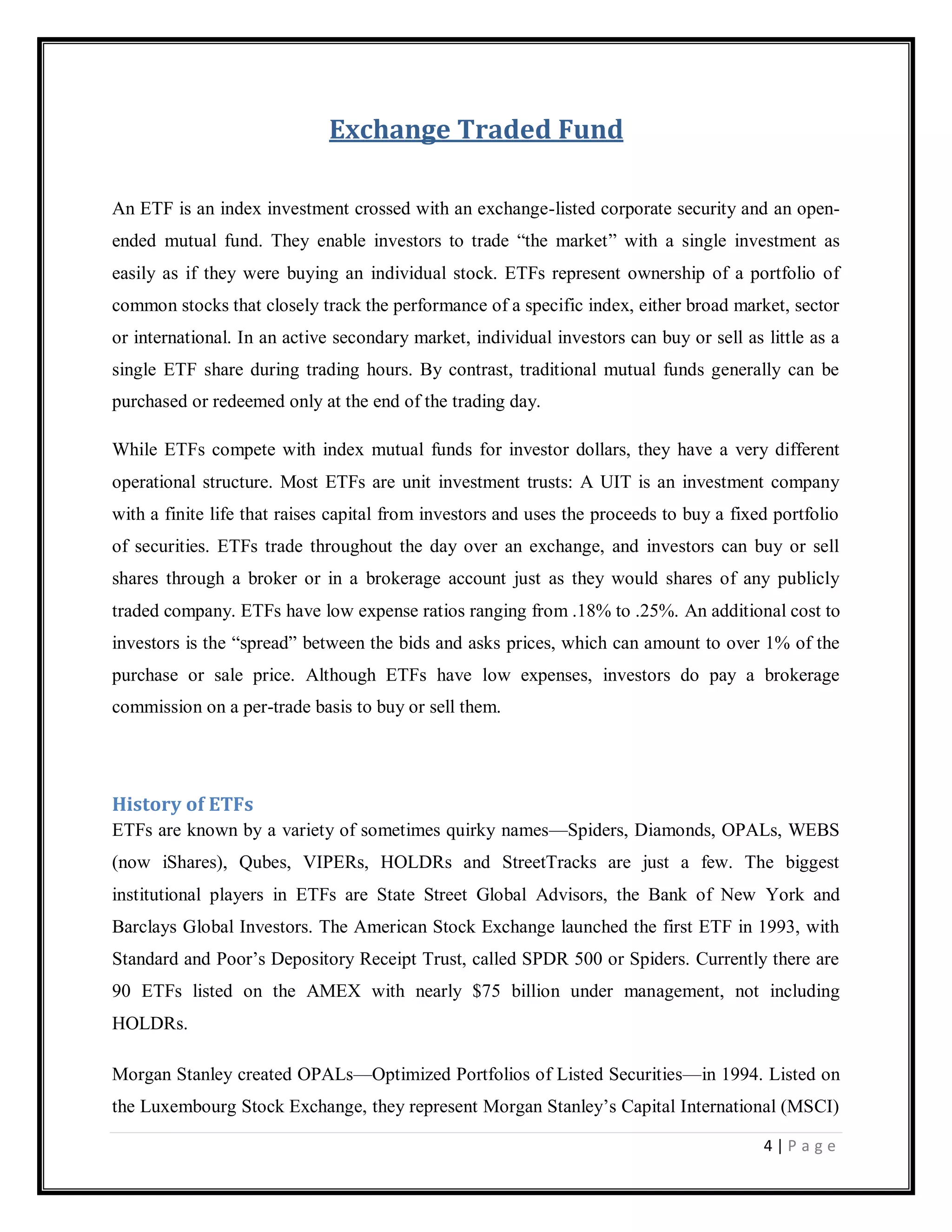
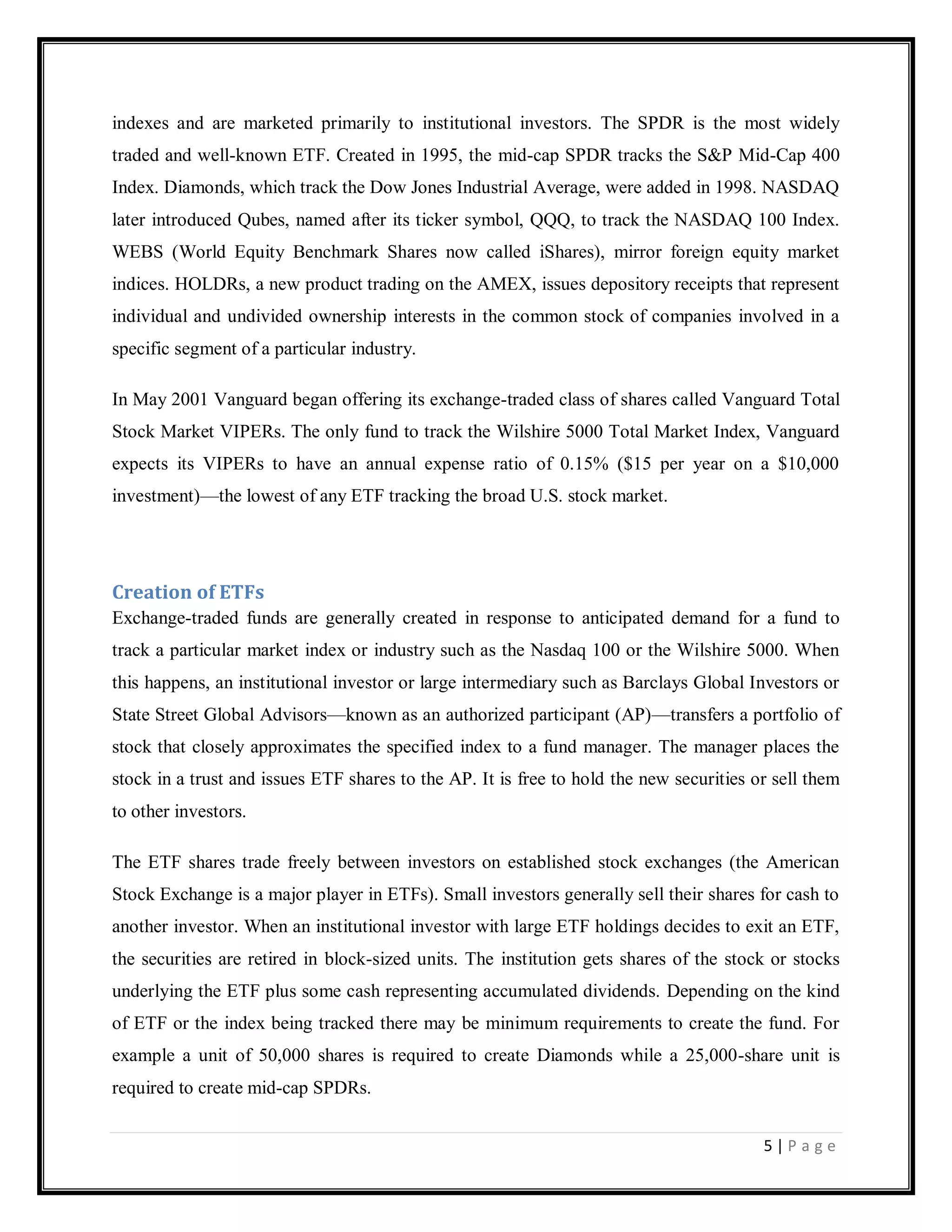
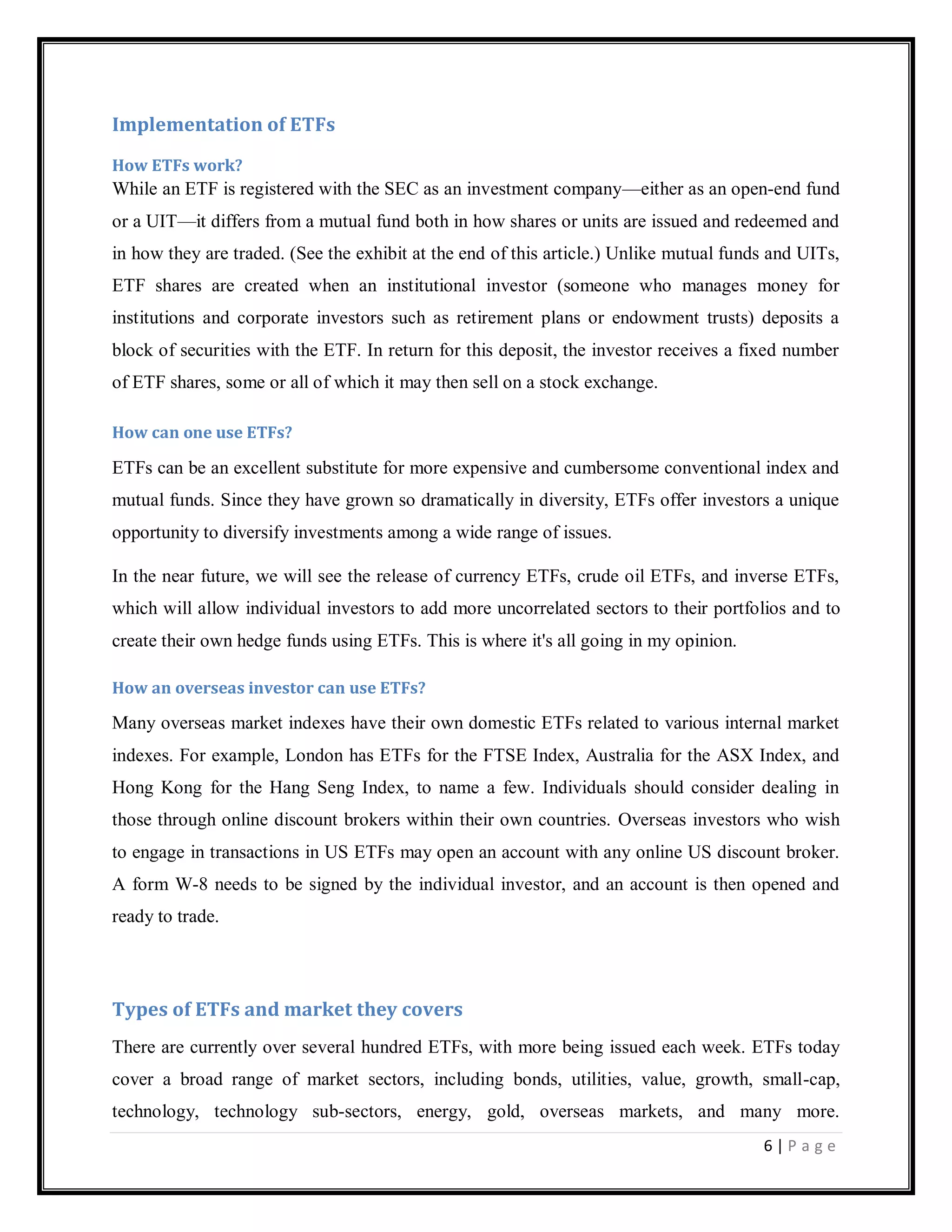
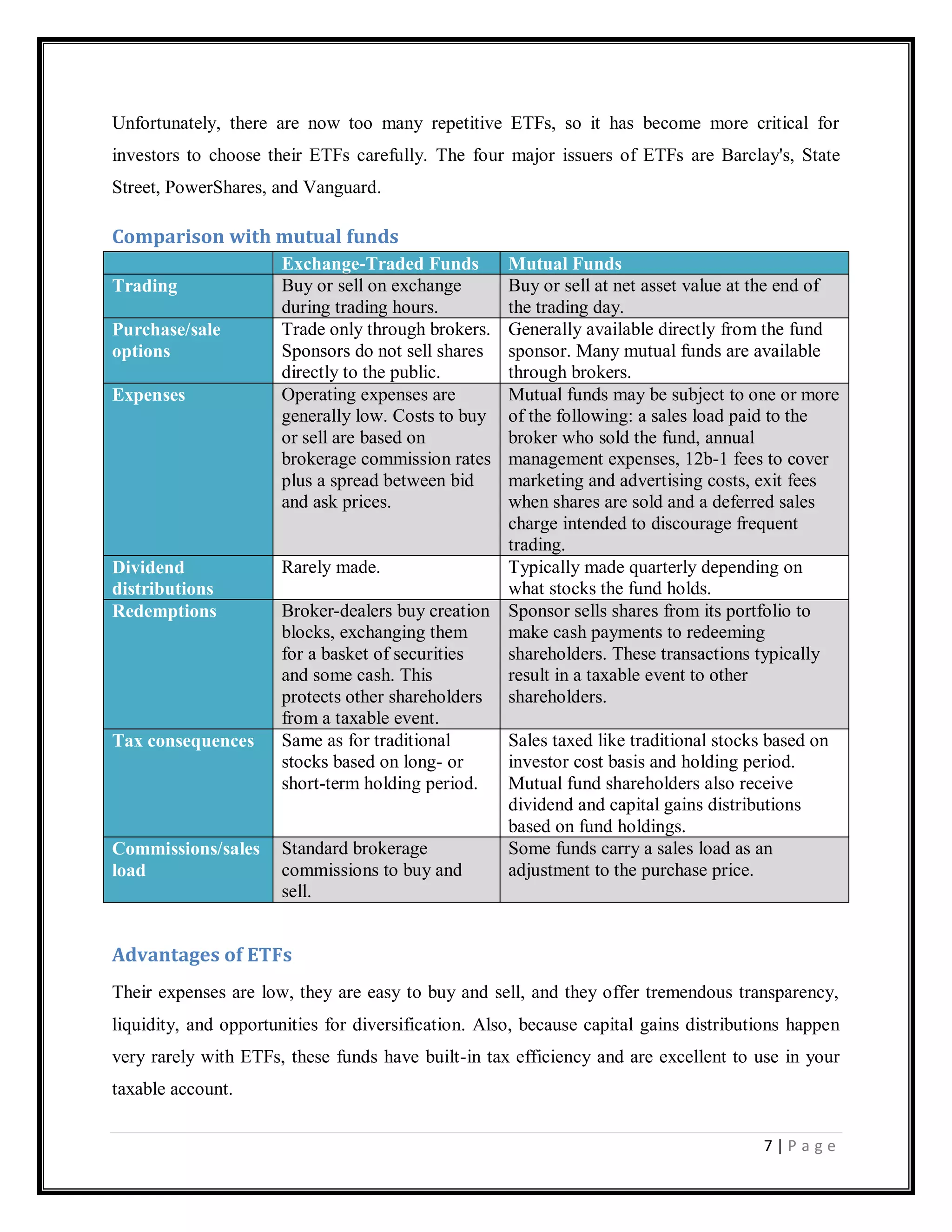
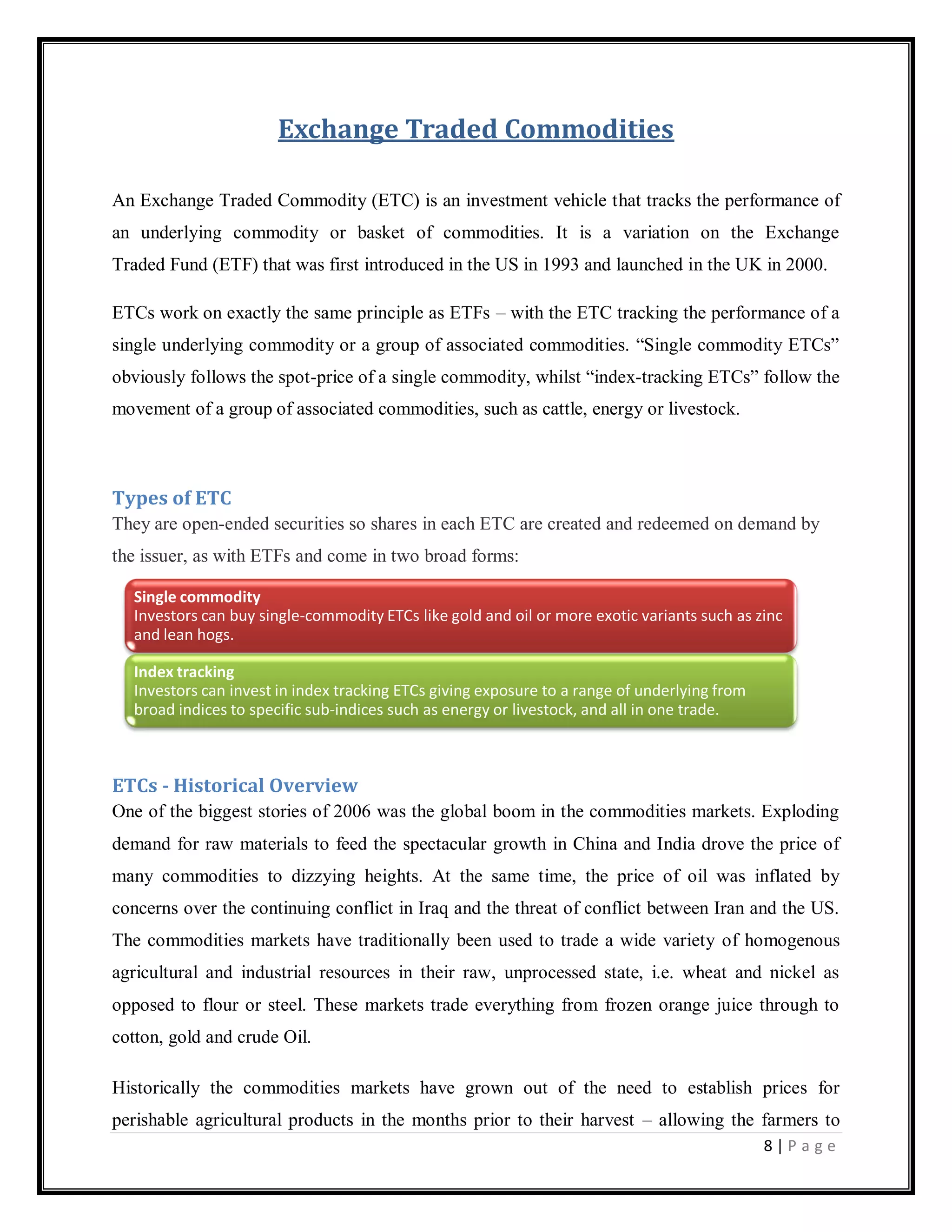
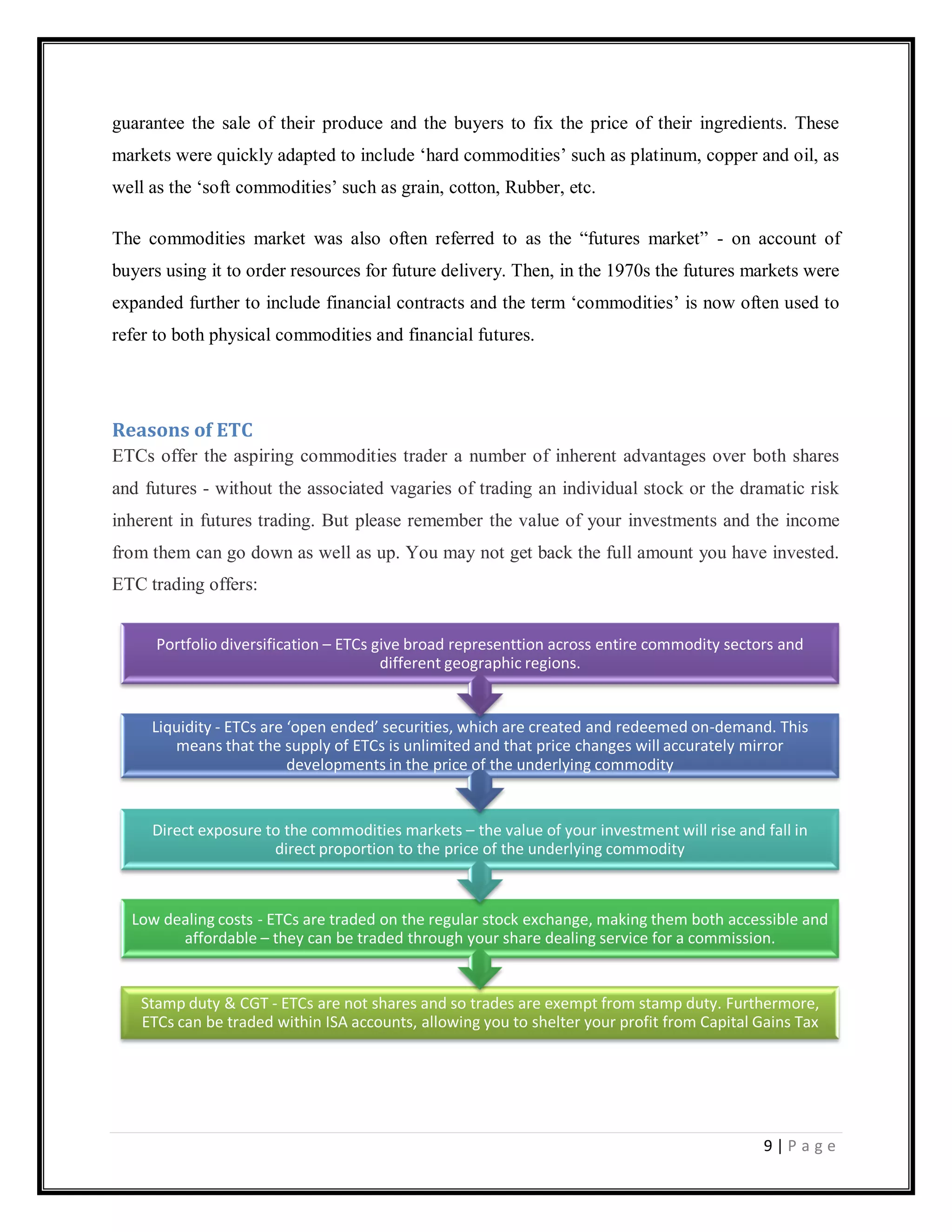

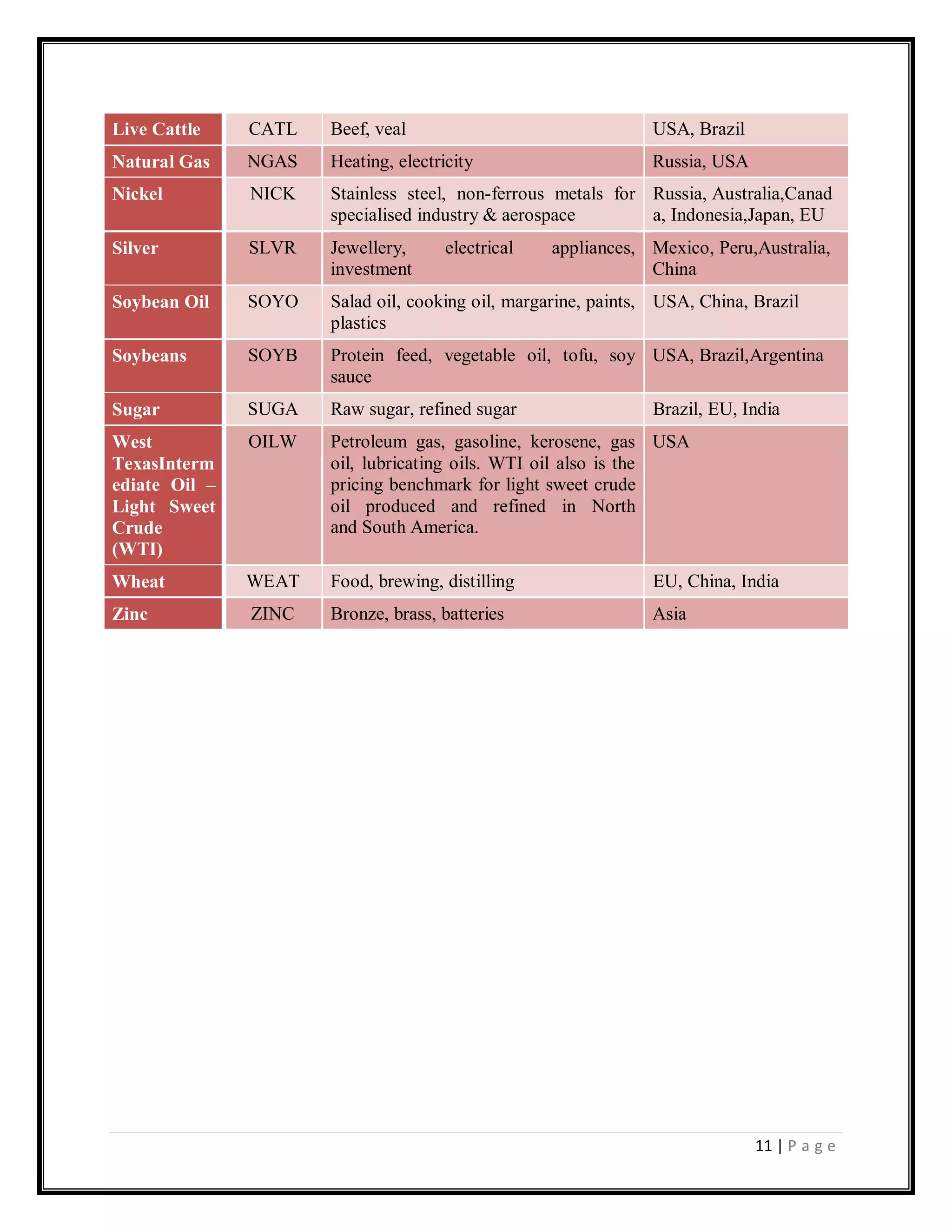
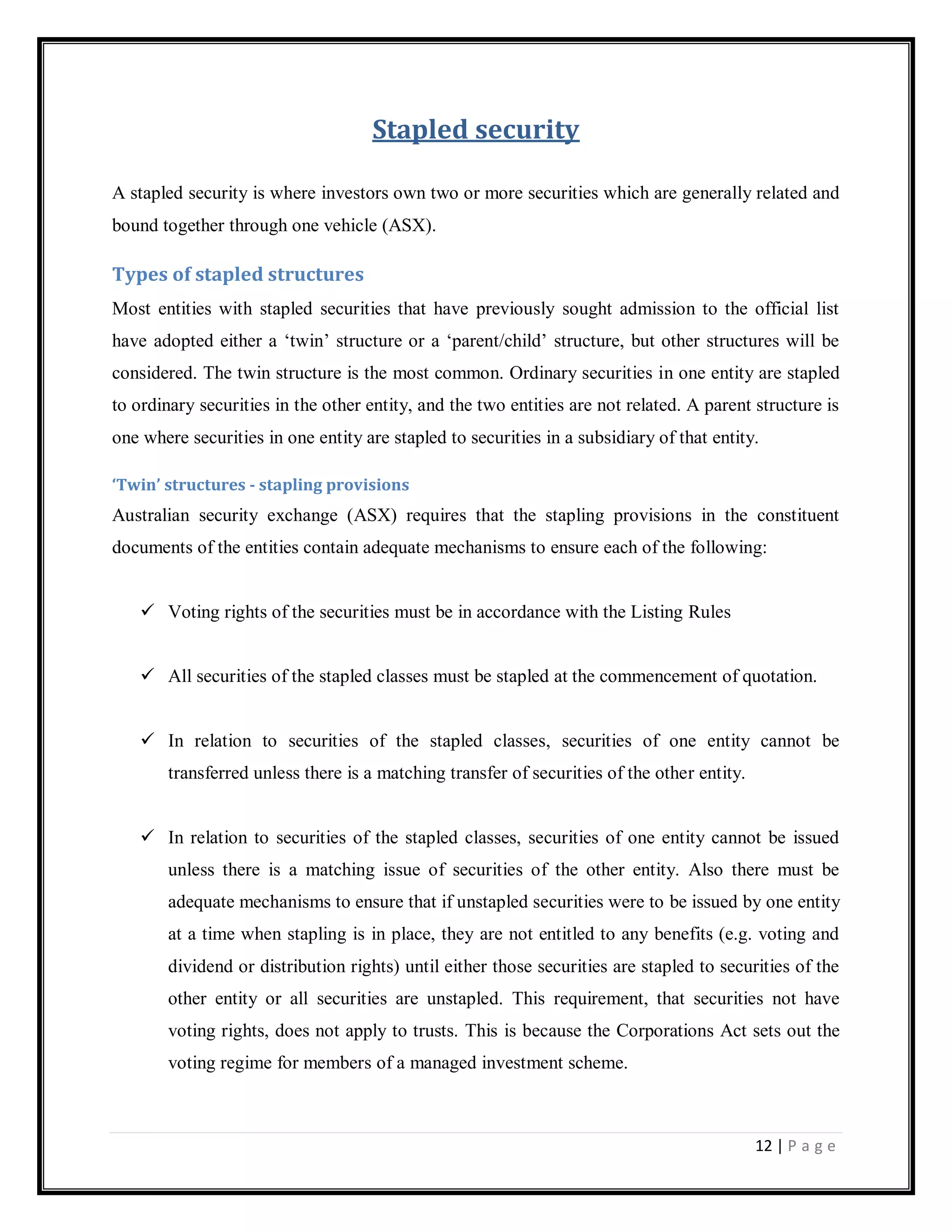
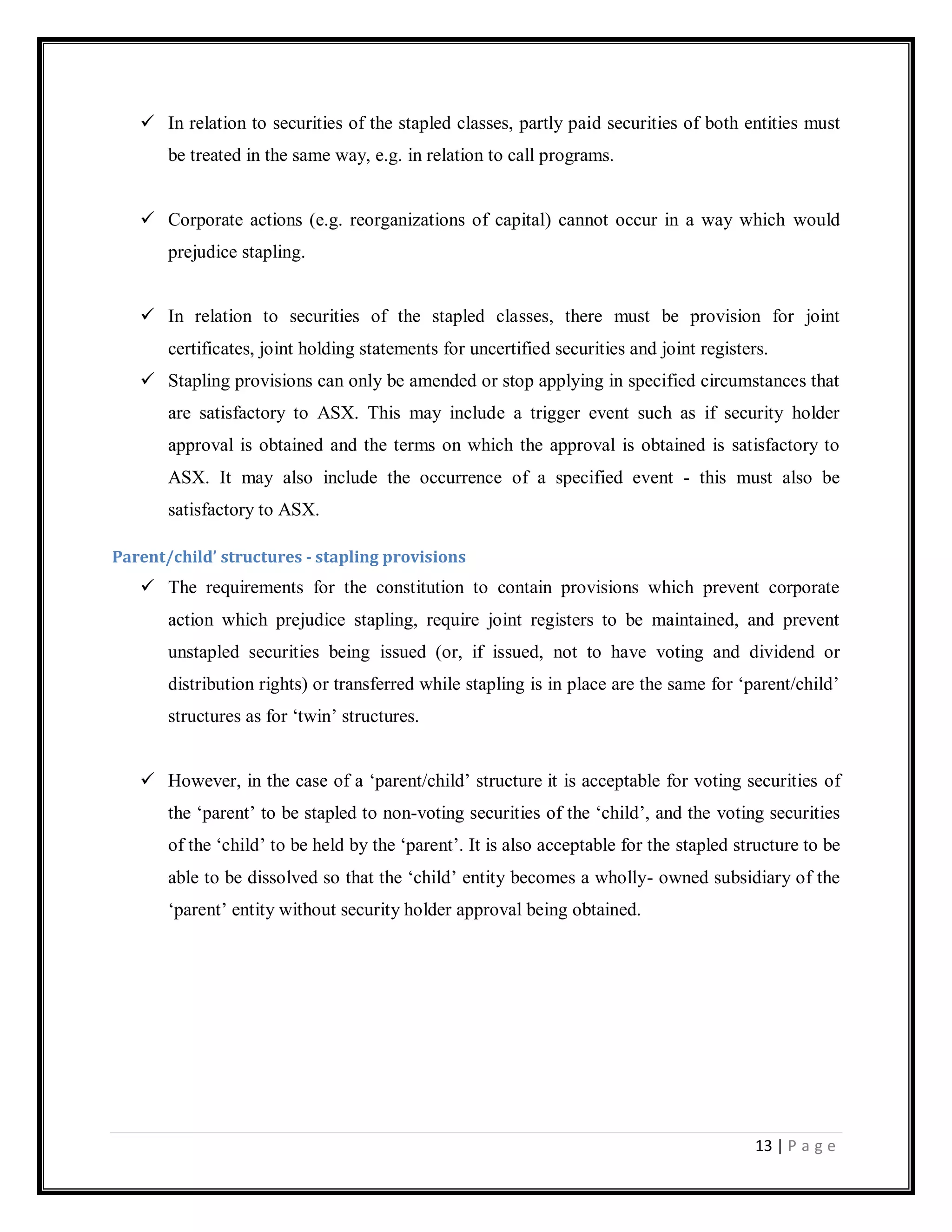
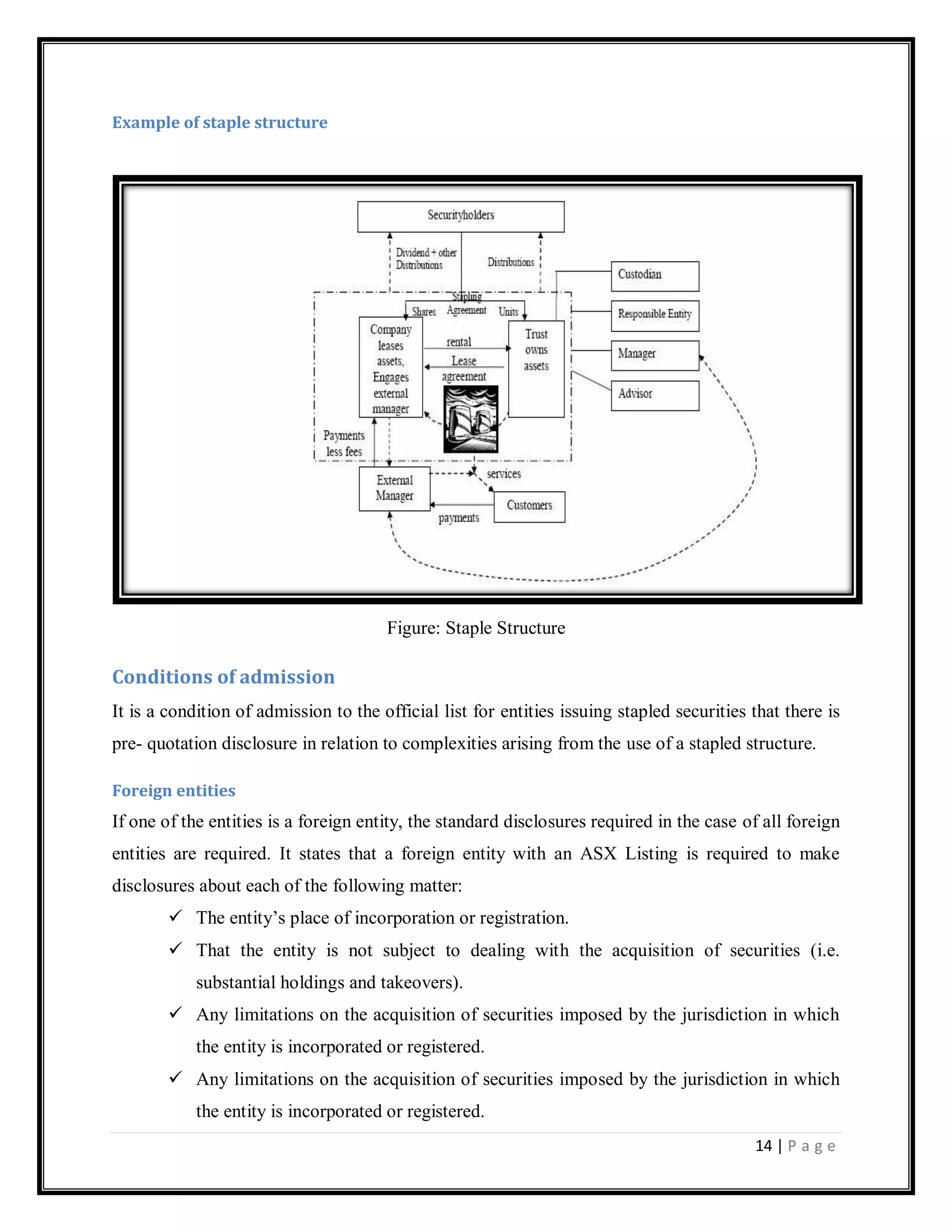

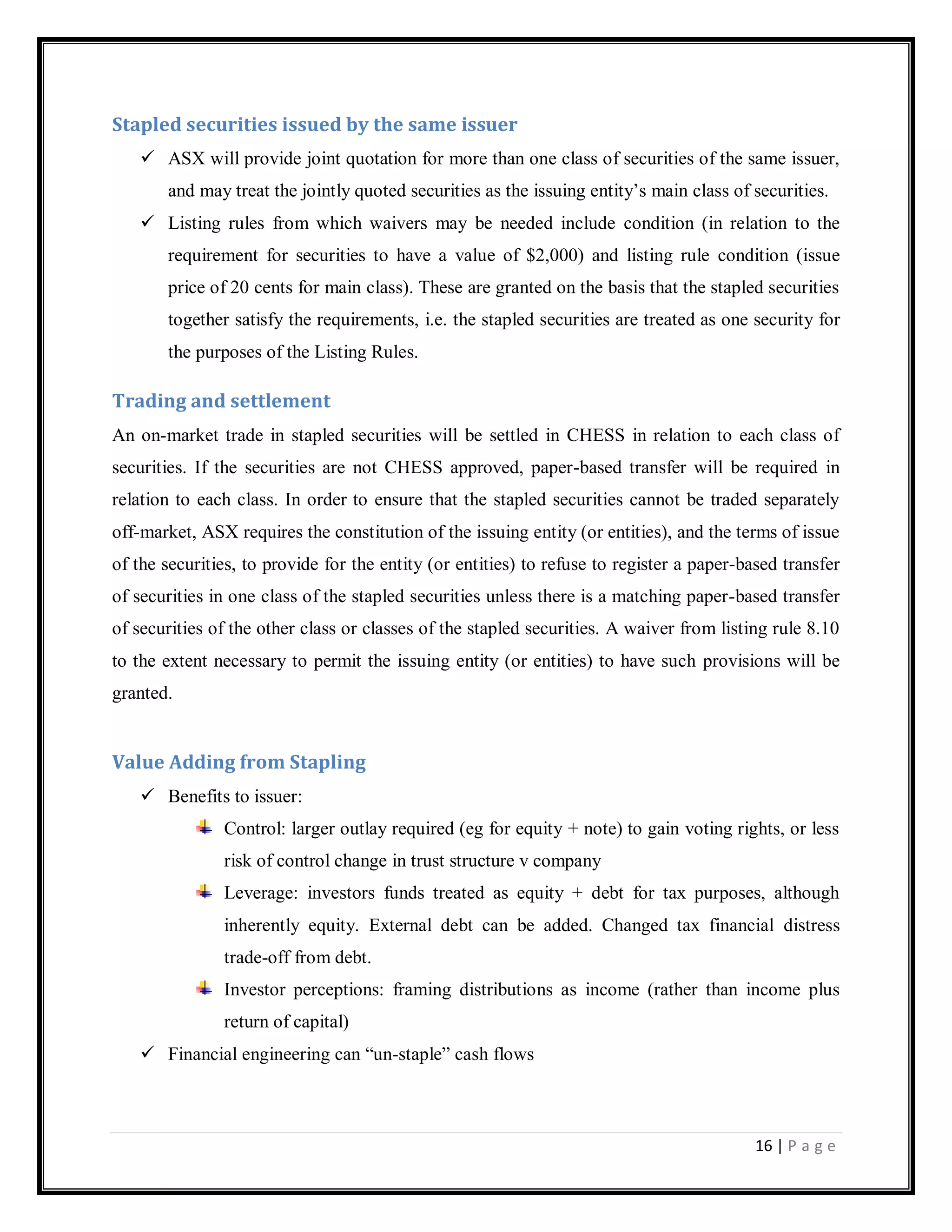
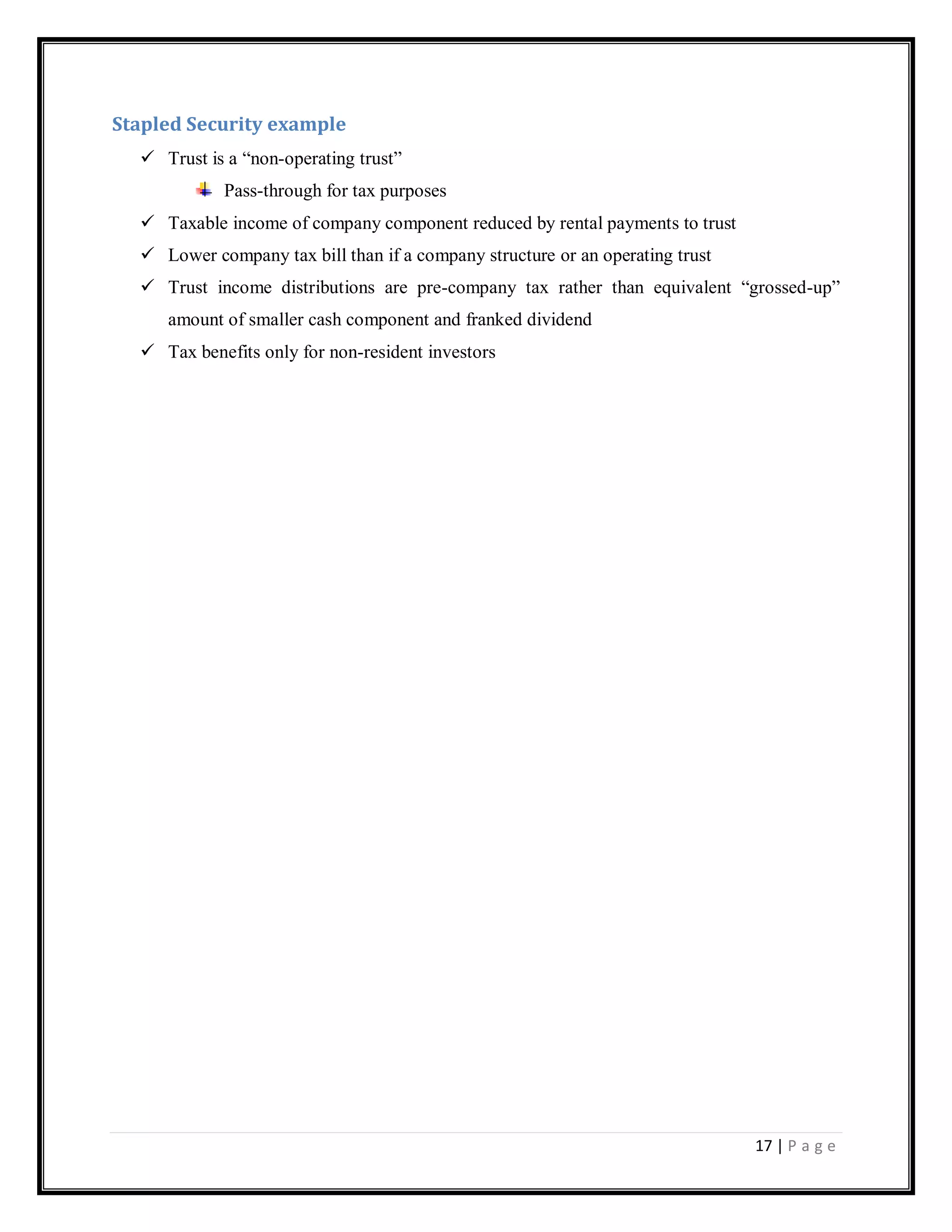
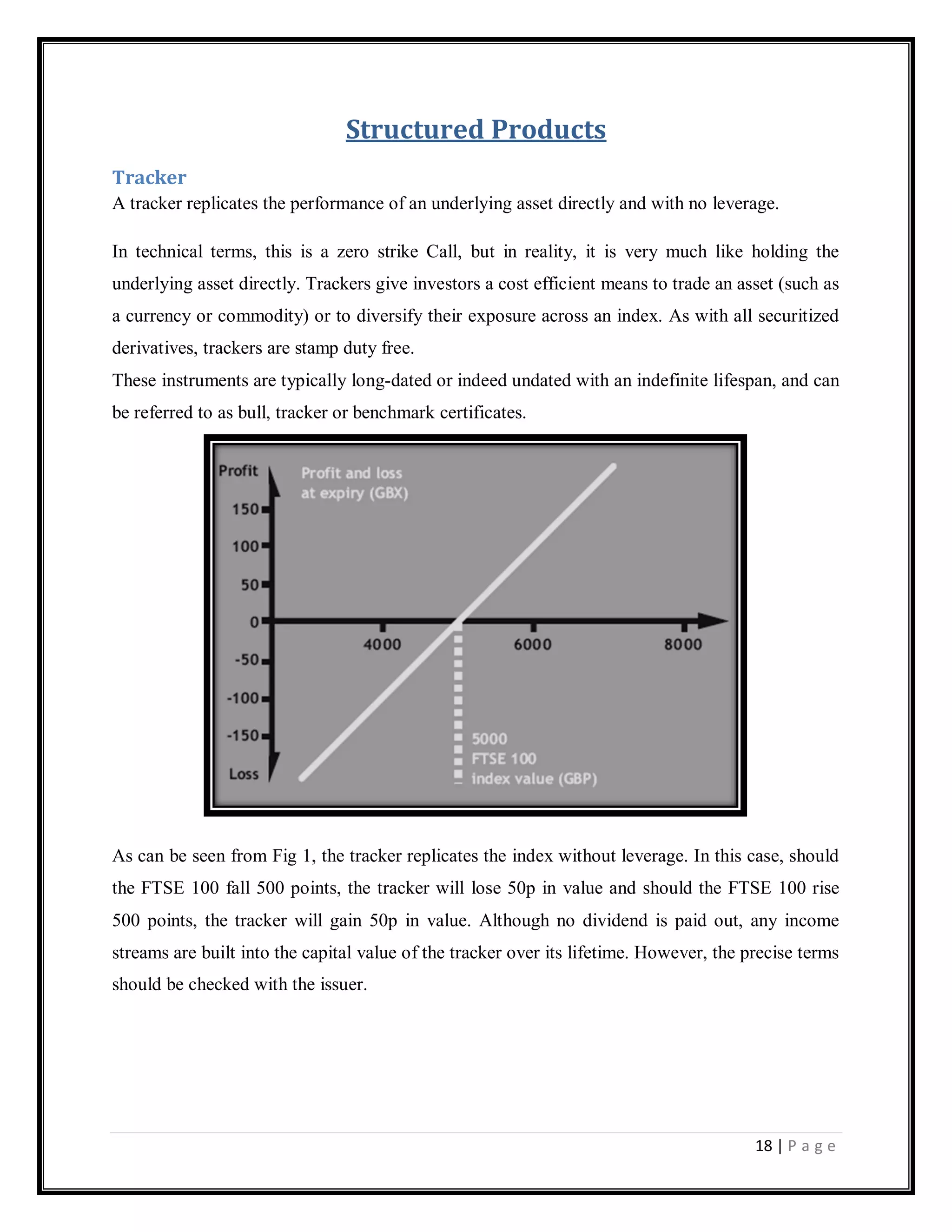
![19 | P a g e
Accelerated Trackers
Accelerated Trackers are growth orientated structured products. These instruments give
additional upside performance whilst maintaining a 1:1 relationship on the downside in return for
surrendering income streams related to the underlying asset.
In the example above, the two dotted lines represent the pay-out profiles of the plain tracker and
at-the-money Call option which form the components. The solid line represents the profit and
loss profile of the accelerated tracker.
At maturity:
On expiry, the holder of the accelerated tracker has the right to:
1. If the final underlying asset price is greater than or equal to the initial underlying asset price:
Initial price + (initial price x [participation level x change in underlying])
2. Otherwise:
Initial price + (initial price x change in underlying)
This means that should the index have risen 10% in value at maturity, then the investor will
receive a 21% profit.](https://image.slidesharecdn.com/derivativesetfetcstaplespehf-12910995198636-phpapp02/75/Derivatives-ETF-ETC-STAPLE-SP-EHF-19-2048.jpg)
![20 | P a g e
In this case, £121 in cash
(100 + (100 x [210% x 10%])).
The investor does not have to worry about the currency risk associated with the underlying asset
being priced in Yen as this product is Quanto and currency risk is hedged out on the investors‘
behalf by the issuing bank.
Despite the accelerated upside, the investor faces no additional downside risk (excluding
foregoing any income). Should the index have fallen 10% at maturity, the investor will realize a
loss of -10%.
Reverse Tracker
Reverse trackers are very similar to standard trackers but have an inverse relationship with the
underlying asset – should the price of the underlying asset fall, the price of the reverse tracker
will rise.
This figure shows the inverse relationship the reverse tracker has with the price of Lloyds TSB
plc - if the share price falls 10p, then the reverse tracker price would rise 10p and vice versa.
The price is simply calculated as follows:](https://image.slidesharecdn.com/derivativesetfetcstaplespehf-12910995198636-phpapp02/75/Derivatives-ETF-ETC-STAPLE-SP-EHF-20-2048.jpg)
